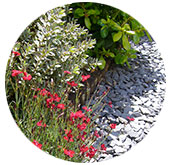
Renters: You have the right to know about any adverse conditions at your rental Property. Ask your landlord if the U.S. EPA has investigated the property for the presence of vermiculite and asbestos or contact the Asbestos Resource Program for this information.
You may come into contact with vermiculite that may or may not be contaminated with Libby Amphibole asbestos during:

Renovating: Removing old carpets or drywall, installing ceiling fans or removing wall outlets, taking down walls, putting in windows
Routine landscaping: Gardening, rototilling or mowing
Extensive digging: Septic systems, sprinklers or water lines
Avoiding asbestos exposure in your home:
High efficiency particulate air (HEPA) filter vacuums are effective on small quantities of vermiculite indoors. NEVER vacuum vermiculite with a regular vacuum. Use a HEPA vacuum to remove dust from previously inaccessible locations such as under recently removed carpets, appliances and furniture.
For larger quantities of vermiculite found either inside or outside, do not disturb the material. Do not vacuum, even with a HEPA vacuum. Leave the material alone and call the ARP Hotline.
Avoiding asbestos exposure while working outside:

- Do water your lawn often, a healthy lawn reduces dust.
- Do rinse gardening tools outside within your work area after every use.
- Do wipe your feet and/or take your shoes off at the door and leave them outside, if possible. Try not to bring any contaminated clothing or material back inside.
- Do wash your hands outdoors after any yard work, if possible.
- Do not disturb areas where you can see vermiculite. If it is a place you intend to work in, cover the vermiculite and call the ARP Hotline.
- Do not dig, cultivate, mow, rake or rototill your yard or garden when it is dry and dusty.
- Do not bring dusty or dirty things inside.

